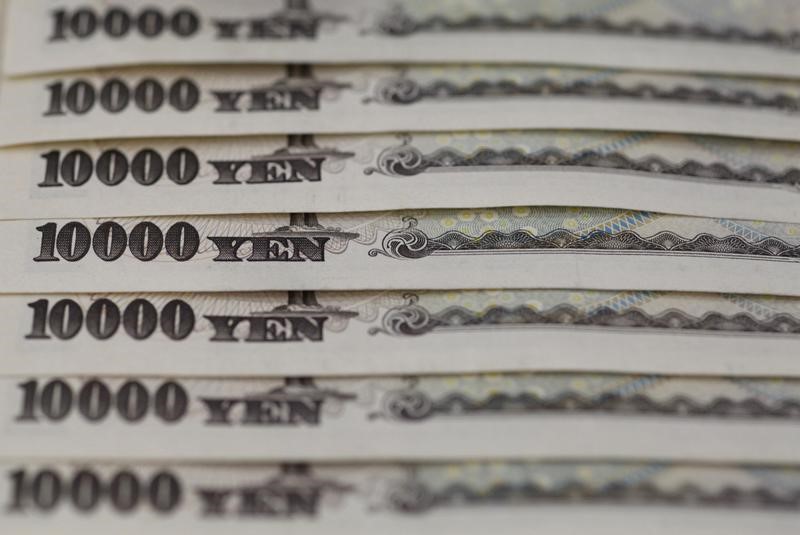
The Australian dollar was an outlier for the day, appreciating sharply after a hotter-than-expected inflation reading sparked fears of an interest rate hike by the Reserve Bank of Australia.
A strong dollar and souring sentiment towards China, amid fears of a trade war, weighed on the yuan, while most other Asian currencies also drifted lower.
The dollar index and dollar index futures firmed slightly in Asian trade, and were close to two-month highs. Focus this week was largely on PCE price index data, which is the Federal Reserve’s preferred inflation gauge.
The Japanese yen’s USDJPY pair rose 0.1% to 159.80 yen, coming close to the 160 yen level that had spurred intervention in May.
Government officials kept up warnings that they would intervene in the event of any excessive volatility against the yen. This notion kept USDJPY from breaching 160, at least for the time being.
The yen’s latest bout of weakness came following dovish signals from the Bank of Japan over tightening policy during its June meeting. Fears of high U.S. interest rates also kept traders short yen and long on the dollar.
The Australian dollar’s AUDUSD pair shot up 0.5% after consumer price index inflation data read hotter than expected for May.
The reading showed inflation moving further away from the RBA’s 2% annual target range, sparking speculation that the central bank could potentially hike interest rates further in 2024.
The reading comes just a week after the RBA kept rates steady during its June meeting, but struck a much more hawkish stance than markets were expecting. Australian bond yields spiked after the CPI data, with traders speculating that the RBA could raise rates by as soon as August.
Broader Asian currencies weakened, as anticipation of key U.S. inflation data kept traders biased towards the dollar. Concerns over China also kept traders wary of regional markets.
The Chinese yuan’s USDCNY pair remained at a seven-month high, following another weak midpoint fix by the People’s Bank of China. Mounting pressure against the yuan, amid concerns over a trade war with the West, saw the PBOC keep two straight days of weak midpoint fixes.
The South Korean won’s USDKRW pair rose 0.1%, while the Singapore dollar’s USDSGD pair rose slightly.
The Indian rupee’s USDINR pair rose marginally but remained below record highs hit earlier in June.
To read the full article, Click Here
